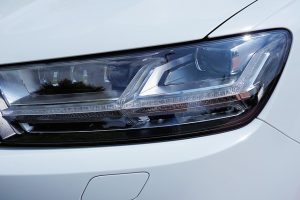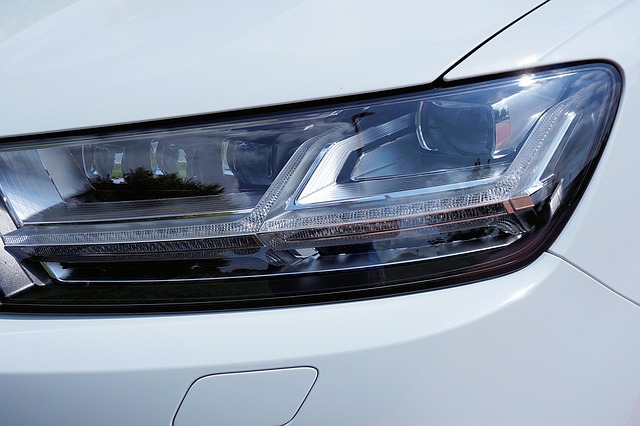Audi E-Tron – eminently, the automotive climate is rapidly shifting. From around eighteen years ago, hybrid powertrains were just beginning to gain traction in the form of the Toyota Prius and Honda Insight. And since then, the world has attempted pure electric vehicles many times. But in just 15 years, EVs are now an actually viable option and are seemingly threatening internal combustion as a method of vehicle propulsion. With that, even long-established companies are eagerly adopting electric power, with Audi being one of them.
Audi E-Tron
More specifically, the Audi e-tron. It’s a four-wheel-drive SUV, a popular genre of cars, but at the same time also powered purely by electric motors. But to really top the headlines with your EV nowadays, you do have to pack some resemblance of innovation, which the e-tron does, let’s walk through it.
Aside from the camouflage that the e-tron dons for the press, it’s actually a largely conventional-styled Audi SUV. Following Audi’s modern design language that we’re accustomed to, it’s sharp and sleek, with no real indication of its silent nature. As crisp and well-defined its lines are, Audi also says the shape is sculpted to minimize drag.
Powered by two electric motors that output a combined 350 hp and 414 lb-ft of torque, the e-tron runs on a different kind of four-wheel drive system from your regular Audi Quattro. This powertrain can also ‘boost’ to 402 horsepower propelling the e-tron from 0-62 mph in under 6-seconds, a remarkable feat for an SUV that will no doubt be portly.
Providing the fuel is a 95 kWh battery that’s also capable of sustained 150 kW DC fast charging that nearly brims the charge in just 30 minutes, surpassing even Tesla’s venerated supercharger network. It can also be charged on a more sedate 11 kW pace at AC charging stations that can double to 22 kW with Audi’s optional on-board charger.

That said, ever since the inception of the Audi e-tron, the headline story is the exceptional recuperation ability of the vehicle itself. With an intelligent electrohydraulic braking system, the recuperation system can determine the amount of regenerative braking to utilize, and the driver can pull the ‘shifter paddle’ behind the steering wheel to demand even more severe regent braking if desired.
The braking is done entirely via wire, which means that the car can also ascertain whether if you need the hydraulic brakes dependent on the pedal input. If it’s a bit of a panic situation or if you require heavy braking, the hydraulic brakes kick in for better response. This system is so efficient in fact that it’s said to contribute about 30% of the e-tron’s range. And if you’re on an especially elevated terrain such as Pikes Peak and rolling down, it can muster about 1 mile of range for every mile you travel down. And you’ll largely be relying on the regenerative braking which reduces the brakes’ temperatures and wear.
Of course, since the e-tron isn’t truly fully unveiled and released just yet, we can’t truly be certain on how it compares to others of its segment. Right now, the two other obvious contenders are the Jaguar I-Pace and Tesla Model X. The Jaguar I-Pace is undoubtedly one suave looking brute that’s more performance-centric. Right now, the I-Pace seems faster but offers less range and charges at a slower speed, and it’s also more akin to a ‘coupe crossover’ than an actual SUV.
The Model X, on the other hand, is Tesla’s first endeavour into the SUV market. It’s a genuinely practical 7-seater SUV that’s also capable of shaming an Audi R8 in its P100D trim. It also offers more range, but charges at a slower pace even with Tesla’s supercharging station. And it also boasts the ‘Falcon Wing’ rear doors, if that enthrals you.
What the Audi e-tron offers though, I reckon, is probably one of the most cutting-edge regenerative braking system, and Audi’s established build quality and German-tier fit and finish. It also has a solid EV infrastructure. That said, to truly know how it’ll compare against its competitors though, we’ll have to wait until early 2019, which is the e-tron’s projected production date.

